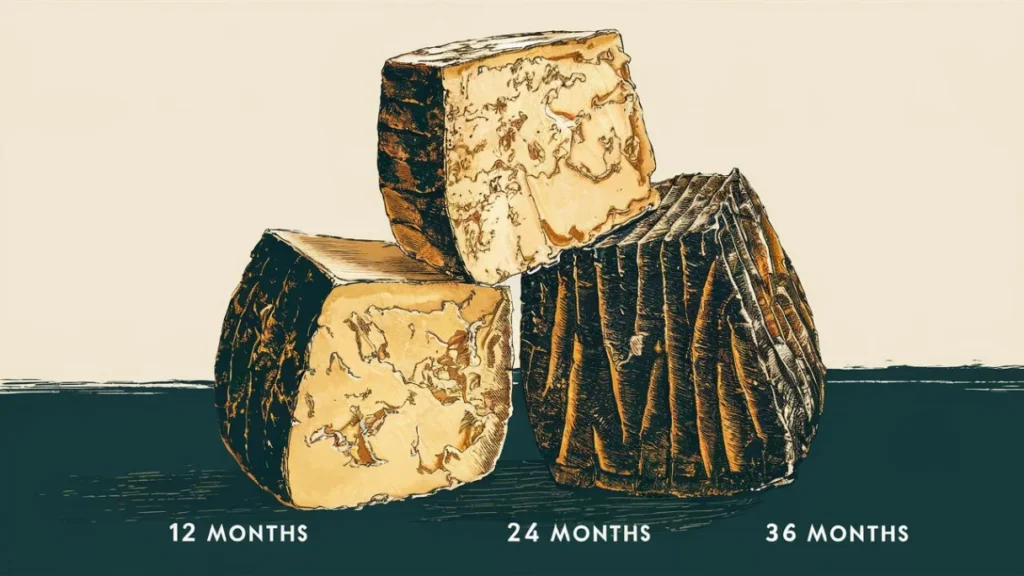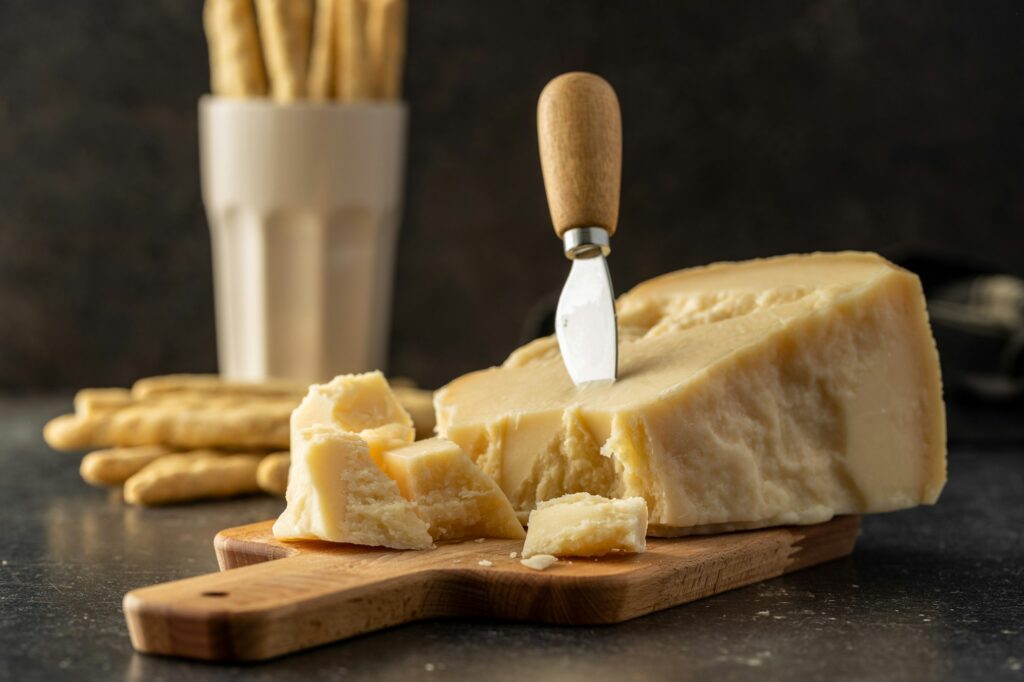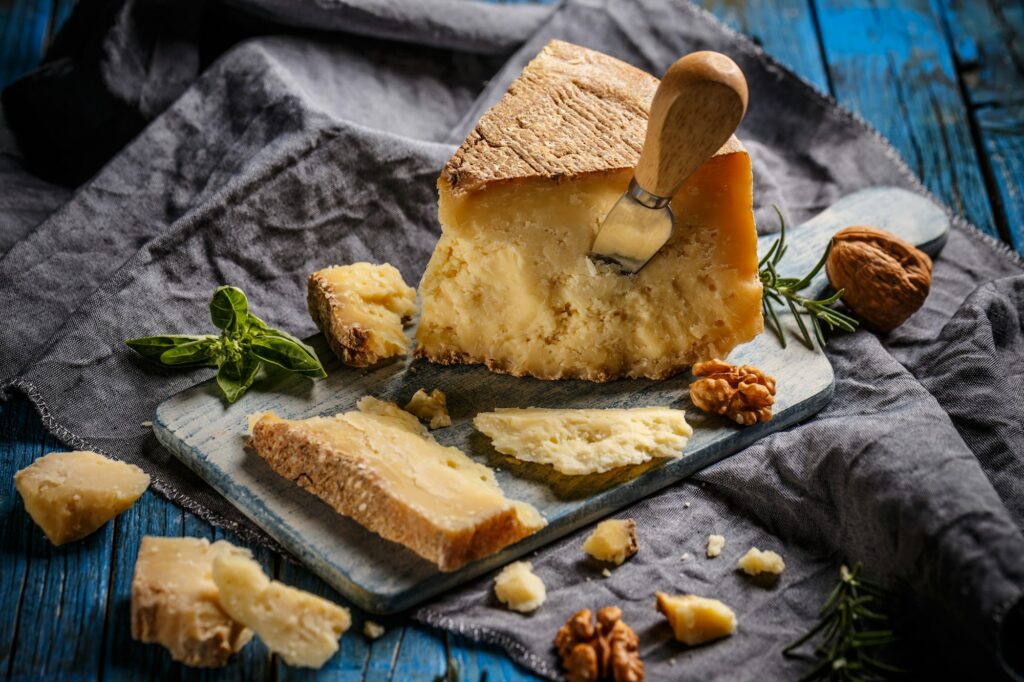12 Facts About Parmesan Cheese

Have you ever wondered what makes Parmesan cheese so irresistibly delicious? This beloved Italian staple is a favorite among cheese lovers worldwide, adding a burst of flavor to countless dishes. But there’s more to Parmesan than meets the eye! In this article, we’ll explore 12 surprising facts about Parmesan cheese that will make you appreciate this culinary gem even more.
1. Parmigiano-Reggiano vs. Parmesan: Not All Cheese is Created Equal
When we talk about authentic Parmesan cheese, we’re referring to Parmigiano-Reggiano. This cheese is exclusively produced in specific regions of Italy, namely Parma, Reggio Emilia, Modena, Bologna, and Mantua. The name “Parmigiano-Reggiano” is protected by the European Union’s Protected Designation of Origin (DOP) status, ensuring that only cheese made following strict traditional methods can bear this title.
On the other hand, “Parmesan” is a more generic term used for cheeses that imitate the style of Parmigiano-Reggiano. While these cheeses might be tasty, they don’t adhere to the same rigorous standards and often lack the depth of flavor found in true Parmigiano-Reggiano.
2. The Magic of Aging: Developing Parmesan’s Signature Flavor

One of the key factors that sets Parmesan apart is its aging process. Parmigiano-Reggiano must be aged for a minimum of 12 months, but some varieties are aged for up to 36 months or even longer! During this time, the cheese develops its signature granular texture and complex flavor profile, which includes nutty, fruity, and umami notes.
The aging process also contributes to Parmesan’s hard, crumbly texture. As the cheese ages, it loses moisture, resulting in a firm consistency that’s perfect for grating over pasta dishes or enjoying in small bites.
3. Simplicity at its Finest: The Three-Ingredient Wonder
Would you believe that authentic Parmesan cheese is made with just three ingredients? It’s true! Parmigiano-Reggiano consists of only:
- Raw cow’s milk
- Salt
- Rennet (an enzyme that helps curdle the milk)
That’s it! No additives, preservatives, or artificial flavors. The simplicity of the ingredients allows the quality of the milk and the cheesemaking process to shine through in the final product.
4. A Surprisingly Lactose-Friendly Cheese

While Parmesan is undeniably a dairy product, it might be more suitable for those with lactose sensitivities than you’d expect. During the lengthy aging process, the lactose in the milk is naturally broken down and converted into lactic acid. As a result, Parmigiano-Reggiano contains very little lactose, making it a potentially more digestible option for some individuals.
However, it’s essential to note that everyone’s tolerance to lactose varies, and those with severe lactose intolerance should still exercise caution when consuming Parmesan cheese.
5. A Nutrient-Dense Delight
Parmesan cheese isn’t just delicious; it’s also packed with nutrients that can benefit your health. A single ounce (28 grams) of Parmigiano-Reggiano contains:
- Protein: 10 grams
- Calcium: 25% of the Daily Value (DV)
- Vitamin B12: 11% of the DV
- Vitamin A: 6% of the DV
- Phosphorus: 16% of the DV
Parmesan’s high protein content makes it a satisfying addition to meals, while its calcium and phosphorus content contribute to strong bones and teeth.
6. The Secret’s in the Copper Kettle

Traditionally, Parmigiano-Reggiano is made using copper kettles during the cheesemaking process. The use of copper is believed to contribute to the cheese’s unique flavor profile, as the metal interacts with the milk in a specific way.
While not all modern Parmesan producers use copper kettles, many artisanal cheesemakers continue to embrace this time-honored tradition to create cheeses that stay true to the original taste and character of Parmigiano-Reggiano.
7. A Snack that Stands Alone
Parmesan cheese isn’t just a topping for pasta dishes; it’s a delicious snack in its own right! The firm, crumbly texture of Parmesan makes it easy to break into bite-sized pieces, perfect for nibbling on throughout the day.
Try pairing Parmesan chunks with some dried fruit, nuts, and cured meats for a gourmet twist on the classic trail mix. The cheese’s savory, umami flavor complements the sweetness of the fruit and the richness of the meats, creating a satisfying and balanced snack.
8. Elevate Your Mac and Cheese Game
Mac and cheese is the ultimate comfort food, but have you ever tried adding Parmesan to the mix? Grating some Parmigiano-Reggiano into your cheese sauce or sprinkling it over the top of your baked mac and cheese can take this classic dish to new heights.
Parmesan’s nutty, slightly sharp flavor adds depth and complexity to the creamy cheese sauce, making your mac and cheese feel more grown-up and gourmet. Plus, the cheese’s granular texture provides a satisfying contrast to the smooth sauce and tender pasta.
9. Don’t Toss That Rind! Flavor Boosting Secrets
If you’ve ever purchased a wedge of Parmigiano-Reggiano, you might have noticed the thick, hard rind that encases the cheese. While it might be tempting to discard the rind, it can actually be a valuable tool in your kitchen.
Parmesan rinds are packed with flavor and can be used to enhance the taste of soups, stews, and sauces. Simply add the rind to your pot as your dish simmers, allowing it to infuse the broth or sauce with its rich, savory essence. Once the rind has softened, you can remove it from the pot and enjoy your meal with an extra boost of Parmesan flavor.
Using Parmesan rinds in your cooking is also a great way to reduce food waste and get the most out of your cheese purchase.
10. A Connection to Other Italian Delicacies
Parmigiano-Reggiano isn’t just delicious on its own; it also has a fascinating connection to another famous Italian product: Parma ham (Prosciutto di Parma).
In the production of Parmesan cheese, the whey (the liquid that separates from the curds) is often used to feed the pigs that are raised to make Prosciutto di Parma. This practice not only reduces waste but also contributes to the distinctive flavor of the ham.
The relationship between Parmigiano-Reggiano and Prosciutto di Parma highlights the interconnectedness of Italian cuisine and the importance of regional traditions in shaping the flavors we know and love.
11. A Cheese That Comes at a Price
Authentic Parmigiano-Reggiano is known for its exceptional quality and flavor, but that excellence comes at a cost. Due to the strict production standards, long aging periods, and limited production areas, Parmesan can be one of the more expensive cheeses on the market.
Aged varieties of Parmigiano-Reggiano, such as those matured for 24 or 36 months, can be particularly pricey. However, many cheese enthusiasts believe that the unparalleled taste and texture of genuine Parmesan are worth the investment.
12. Grana Padano: Parmesan’s Delicious Cousin
While Parmigiano-Reggiano might be the most famous Italian hard cheese, it’s not the only one worth trying. Grana Padano is another delightful cheese that shares many similarities with Parmesan.
Like Parmigiano-Reggiano, Grana Padano is a DOP-protected cheese made from cow’s milk. However, it has a slightly milder flavor and a less crumbly texture due to its shorter aging time (minimum 9 months).
Grana Padano can be a more affordable alternative to Parmigiano-Reggiano, making it a great option for everyday cooking or for those looking to explore the world of Italian hard cheeses.
Conclusion
Parmesan cheese is more than just a tasty addition to your favorite Italian dishes; it’s a fascinating food with a rich history and numerous surprising characteristics. From its strict production methods and lengthy aging process to its unique flavor-boosting properties, Parmigiano-Reggiano is a cheese that truly stands apart.
Now that you’ve learned these 12 intriguing facts about Parmesan, why not explore new ways to incorporate this delightful cheese into your culinary adventures? Try grating it over roasted vegetables, using it to elevate your next grilled cheese sandwich, or simply savoring a chunk alongside a glass of your favorite wine.
And remember, when shopping for authentic Parmesan, look for the “Parmigiano-Reggiano” label to ensure you’re getting the real deal. Your taste buds will thank you!





